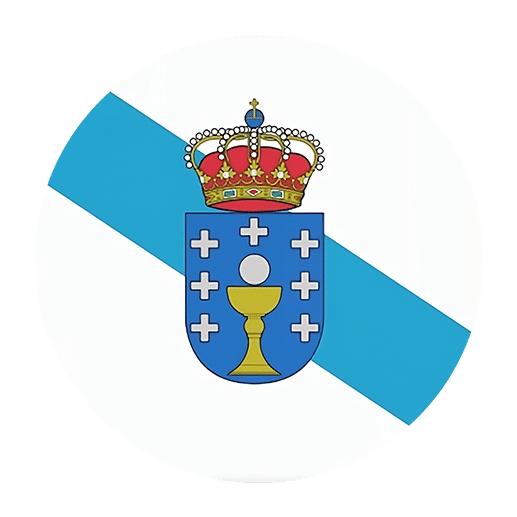Spain, a country known for its vibrant cultural diversity, is a mosaic of languages, traditions, and histories. One of the lesser-known but profoundly significant pieces of this mosaic is the Galician language. Spoken primarily in the northwestern region of Galicia, Galician is not merely a dialect of Spanish but a distinct language with its own rich history, literature, and cultural significance. Understanding the importance of Galician in Spain’s cultural landscape offers a deeper appreciation of the country’s multifaceted identity and the role of regional languages in preserving cultural heritage.
Historical Roots of Galician
The origins of the Galician language can be traced back to the early Middle Ages. During this period, the region of Galicia was part of the Kingdom of Galicia, which was established in the 5th century. The language evolved from the Latin spoken by the Roman settlers in the Iberian Peninsula, much like other Romance languages. However, it was during the period between the 12th and 14th centuries, known as the Medieval Galician-Portuguese period, that Galician flourished as a literary language. This era produced a wealth of poetry and prose, with Galician-Portuguese troubadours composing lyrical works that are still celebrated today.
The subsequent centuries saw the gradual decline of Galician as a literary language due to political and social changes, including the centralization efforts of the Spanish crown. However, Galician persisted as the spoken language of the people, maintaining its distinct identity despite the dominance of Castilian Spanish.
Rebirth and Resurgence
The 19th century witnessed a revival of Galician culture and language, known as the “Rexurdimento” or Renaissance. This period was marked by a renewed interest in Galician literature, history, and identity. Writers such as Rosalía de Castro and Eduardo Pondal played pivotal roles in this cultural resurgence, producing works that celebrated Galician folklore, traditions, and the natural beauty of the region.
The 20th century brought further challenges and opportunities for the Galician language. The Franco regime’s policies of linguistic repression severely restricted the public use of regional languages, including Galician. However, the transition to democracy in the late 1970s heralded a new era of linguistic and cultural revitalization. The Statute of Autonomy of Galicia, approved in 1981, recognized Galician as an official language of the region alongside Spanish, paving the way for its promotion in education, media, and public life.
Galician in Contemporary Spain
Today, Galician enjoys a prominent place in Galicia’s cultural and social fabric. It is estimated that around 2.4 million people speak Galician, with varying degrees of proficiency. The language is taught in schools, used in local government, and featured in regional media. Efforts to promote Galician include initiatives to ensure its presence in digital platforms and modern communication channels, reflecting the language’s adaptability and relevance in the 21st century.
Educational Initiatives
Education plays a crucial role in the preservation and promotion of the Galician language. The Galician government has implemented policies to ensure that Galician is a compulsory subject in schools, alongside Spanish. This bilingual education system aims to foster proficiency in both languages from an early age, enabling students to navigate their cultural heritage while participating fully in the broader Spanish-speaking world.
Universities in Galicia also offer programs and courses in Galician language and literature, contributing to the academic study and research of the language. These institutions play a vital role in training future educators, linguists, and cultural advocates who will continue to promote and preserve Galician.
Media and Cultural Expression
The media landscape in Galicia reflects the region’s linguistic diversity. Galician-language newspapers, radio stations, and television channels provide platforms for news, entertainment, and cultural programming in Galician. These media outlets not only cater to the linguistic preferences of the Galician-speaking population but also play an essential role in normalizing the use of Galician in public and private spheres.
The arts and cultural sectors are also vibrant arenas for Galician expression. Galician literature continues to thrive, with contemporary writers contributing to a rich literary tradition. Music, theater, and cinema in Galician showcase the language’s versatility and its ability to convey complex narratives and emotions. Festivals celebrating Galician culture, such as the Día das Letras Galegas (Galician Literature Day), highlight the region’s literary achievements and cultural contributions.
Galician and Identity
Language is a fundamental aspect of cultural identity, and for many Galicians, speaking Galician is an expression of their regional and cultural heritage. The language embodies the history, traditions, and collective experiences of the Galician people. It serves as a link between generations, connecting contemporary Galicians with their ancestors and preserving the unique cultural characteristics of the region.
Challenges and Opportunities
Despite the progress made in promoting Galician, challenges remain. The dominance of Spanish in many aspects of public life and the increasing influence of globalization pose risks to the continued vitality of the language. Younger generations, in particular, may gravitate towards Spanish or other global languages, potentially leading to a decline in the use of Galician.
However, these challenges also present opportunities. Technological advancements and digital platforms offer new avenues for promoting and preserving Galician. Social media, online content, and digital archives can reach a global audience, raising awareness and appreciation of the language beyond Galicia’s borders. Initiatives to create digital resources and tools in Galician, such as language learning apps and online dictionaries, can support language acquisition and proficiency among new learners.
The Broader Significance of Regional Languages
The importance of Galician extends beyond the borders of Galicia. It is a testament to the value of linguistic diversity and the role of regional languages in enriching national and global cultures. Spain’s linguistic landscape includes other regional languages such as Catalan and Basque, each with its own unique history and cultural significance. Together, these languages contribute to the rich tapestry of Spain’s cultural heritage.
Global Perspectives
The preservation and promotion of regional languages like Galician are not unique to Spain. Around the world, linguistic diversity is recognized as a vital component of cultural heritage. Organizations such as UNESCO advocate for the protection of endangered languages and the promotion of linguistic diversity as essential for sustainable development and cultural preservation.
Language revitalization efforts in other regions, such as the revival of Irish in Ireland or the promotion of indigenous languages in the Americas, parallel the experiences of Galician speakers. These global movements highlight the importance of supporting linguistic diversity and recognizing the intrinsic value of all languages.
Conclusion
The Galician language is a cornerstone of Galicia’s cultural identity and an integral part of Spain’s diverse linguistic landscape. Its historical roots, contemporary significance, and the efforts to promote and preserve it underscore the importance of regional languages in maintaining cultural heritage. By valuing and supporting languages like Galician, we contribute to a richer, more inclusive understanding of our shared human experience. As we navigate an increasingly interconnected world, the lessons from Galicia remind us of the enduring power of language to connect, inspire, and preserve the essence of who we are.

